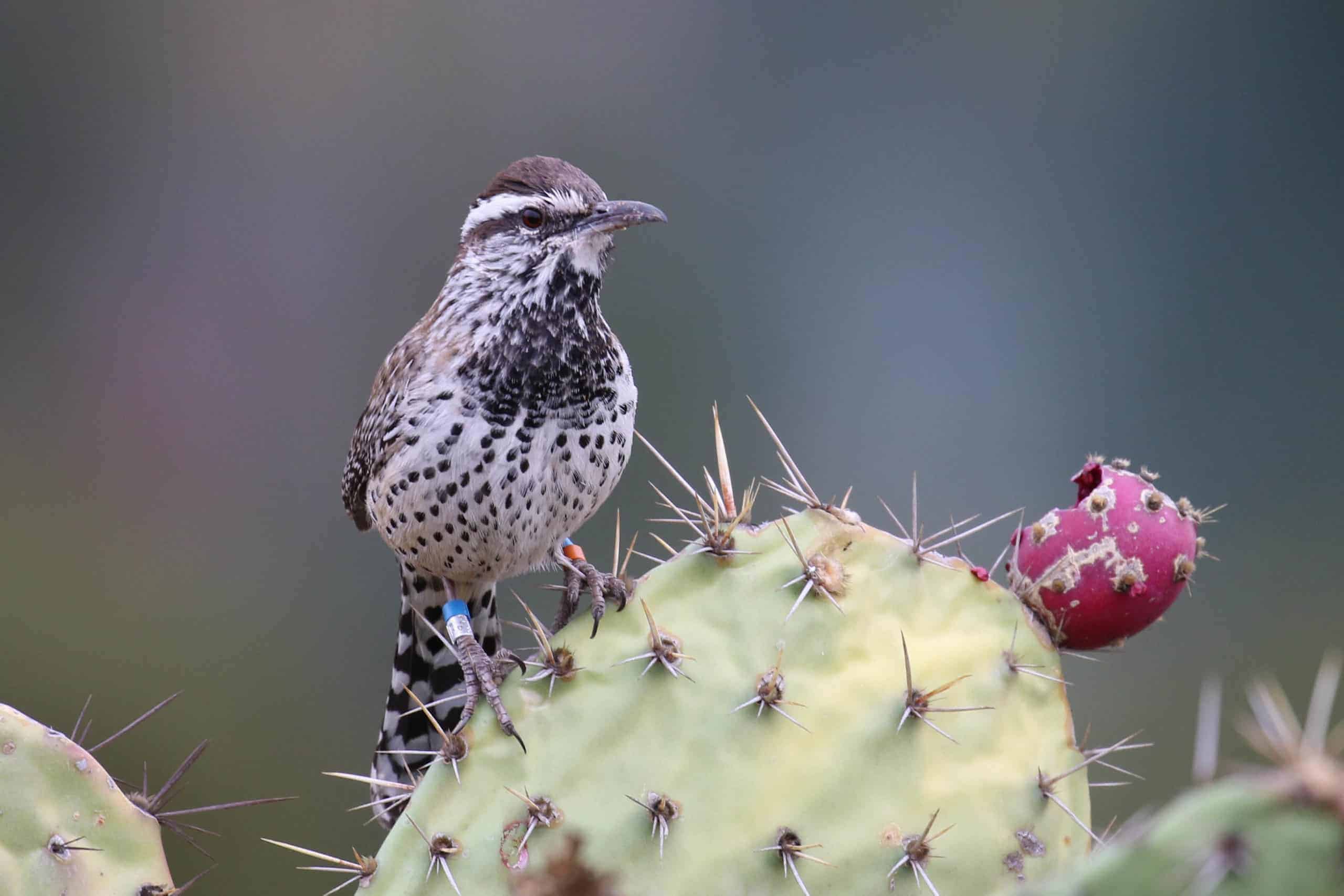Share this article
Cactus wren genetic diversity is declining in Southern California
The high mountains of the Transverse and Peninsular ranges separate cactus wrens along the coast of Southern California from the rest of the species found in the deserts of the interior Southwest. While the birds do fairly well in the arid parts of their stronghold like Nevada and New Mexico, habitat loss has hammered coastal cactus wren populations in Southern California as the human population has grown.
“The distribution and number of birds have really declined as that habitat has become developed,” said Amy Vandergast, a research geneticist at the San Diego Field Station of the U.S. Geological Survey’s Western Ecological Research Center. “That’s a situation where we might see declines in genetic diversity.”
The coastal populations are typically found from Ventura County down through San Diego and past the international border into northern Baja California in Mexico.
These nonmigratory brown mottled wrens, which are a little larger than your typical songbird, nest in cacti like prickly pear. Cactus wrens (Campylorhynchus brunneicapillus) are listed as a California state species of special concern, and Vandergast and her colleagues wondered how well the birds were connected genetically and physically around San Diego.
As part of San Diego’s Management and Monitoring Program, researchers have been tracking the genetic diversity of four populations of cactus wrens around the city.

Coastal cactus wrens are separated from other populations by mountains. Credit: Alex Houston
For a study published recently in Conservation Science and Practice, Vandergast and her colleagues first set out in 2011, playing sounds of male birds to help them trap birds in mist nets. They also analyzed chicks from known nests. In the first batch they collected, the team extracted DNA from blood samples or small feathers from 76 birds that were part of four populations. They then returned in 2017 and used the same technique to extract DNA from 113 more birds from a more recent generation. They included only one bird from each nest or family group in the analysis in an effort to evenly sample each population.
By comparing results over time, the team found that the genetic diversity declined significantly in two of the populations. The genetic information also revealed that there was a low amount of genetic movement between populations. Cactus wrens are nonmigratory—it’s rare that they move more than a couple of miles out of their home range during their lives.
Taken together, these two bits of evidence paint a stark picture for cactus wrens in the San Diego area. “If populations remain this small, we can expect that in each of them, genetic diversity will continue to decline over time,” Vandergast said.
These declines may be exacerbated by the prolonged drought in the area. If genetic diversity continues to suffer, Vandergast said that wildlife managers may have to consider taking action, including swapping eggs from one population into another’s nest. This would only provide temporary fixes for some populations, though. To make long-term improvements to genetic diversity, managers need to consider actions like habitat restoration to connect isolated populations, Vandergast said.
In the meantime, Vandergast said that genetic monitoring will continue to be important for this population of wrens.
“The coastal cactus wren is a really interesting and unique songbird in Southern California,” she said. “And it may be in trouble. When populations lose their genetic diversity, they can lose their ability to adapt to changes in their habitat and environment.”







